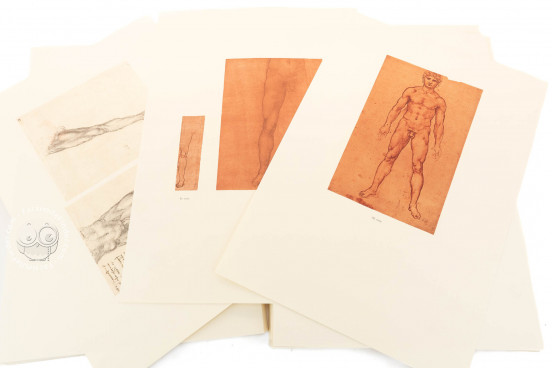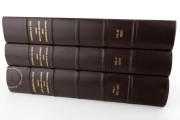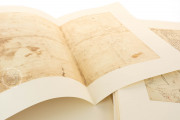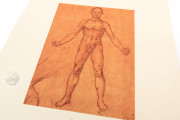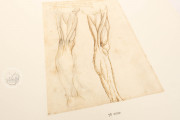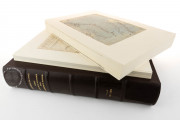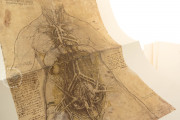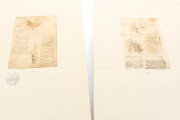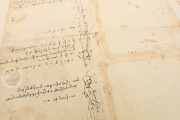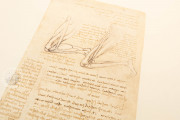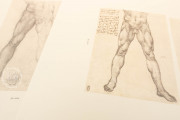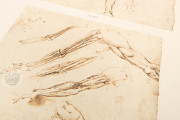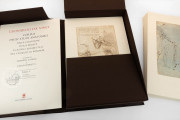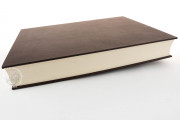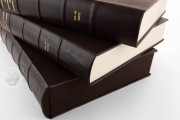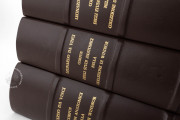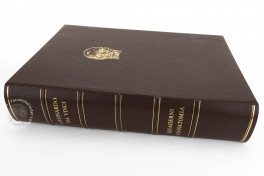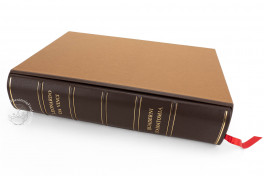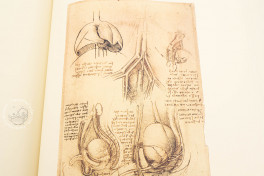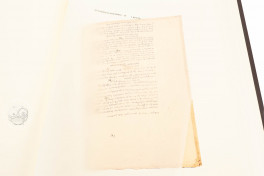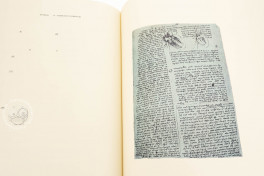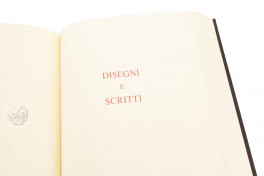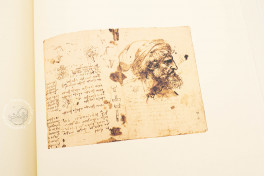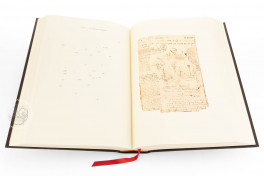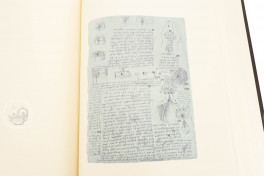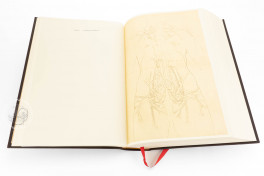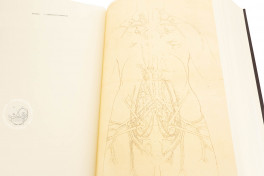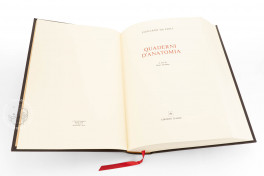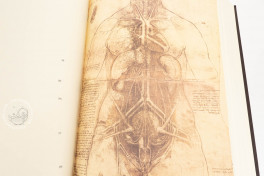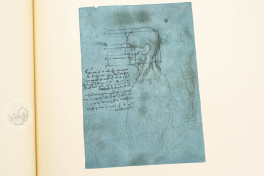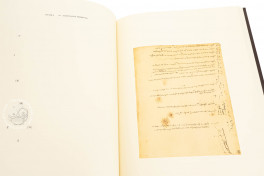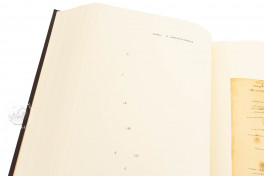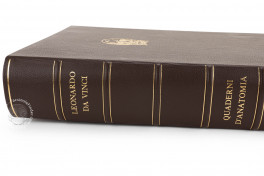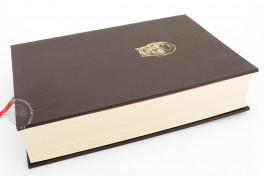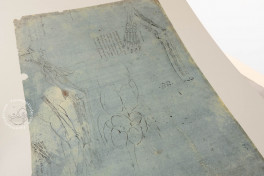This collection includes reproductions from a selection of the nearly 600 drawings by Leonardo da Vinci housed at the Royal Library in Windsor Castle. The substantial body of anatomical studies, which were admired by Vasari in the sixteenth century and published by various scholars across different countries in subsequent centuries, was the culmination of Leonardo’s research and studies spanning nearly thirty years, from 1485 to 1515. The Master devoted himself to this endeavor with exacting precision, basing his anatomical insights largely on hands-on dissections. The Windsor anatomical sheets are replete with notations, drafts, and reflections that Leonardo compiled during his comprehensive studies, initially intended for a treatise that ultimately remained unpublished.
Leonardo's aim was to understand the functions of the body, to study its complexity, and to distill it down to fundamental and universal principles shared by all humans. It is believed that Leonardo dissected more than thirty corpses, examining their internal organs and sketching the various parts that composed the human form, then reconstructing them in his drawings.
Approaching Anatomy for Artistic Purposes
Leonardo's foray into anatomy was driven by his artistic quest to capture the human form's inherent perfection and harmonic proportions. His pursuit merged the imaginative flair of an artist with the precision of a scientist, creating anatomical sketches that were both creatively inspired and rigorously accurate. This fusion of art and science is evident in early works like Saint Jerome, dating from around 1480, which showcases a keen attention to the anatomy of tendons and muscles, culminating in a meticulously rendered depiction of the skull.
In his depiction of joints and limbs, Leonardo displayed a remarkable ability to infuse his subjects with emotion and physical tension. This is particularly evident in the expressive hands of the Madonna in The Virgin of the Rocks and the serene repose of the Mona Lisa's hands. Leonardo's interest in physiognomy also led him to explore the correlation between facial expressions, the emotions they convey, and the deeper character of individuals.
Anatomical Explorations
The annotations accompanying the drawings are markedly scientific in tone, betraying Leonardo’s vast acquaintance with the medical and anatomical literature of his predecessors. The drawing predominates over the text, which serves as an explanation of the observed functions of each organ and part. In his approach, Leonardo deepened the description and consistently indicated "the use, the office, the benefit." In his later compositions, he stylized the human figure and its components as he was primarily interested in highlighting the harmony of human functionality rather than the uniqueness of each.
Leonardo's Study of Body Systems
Leonardo's drawings serve as a testament to his meticulous study of human anatomy. His detailed illustrations captured the intricate movements of tendons, bones, and muscles, demonstrating a deep understanding of the musculoskeletal system and how it facilitates movement. His explorations into the musculature extended to analyzing the process of contraction. Leonardo faced challenges with the respiratory system, dedicating substantial effort to unravel its complexities. His interest in the nervous system led him to produce numerous cross-sectional views of the cranial cavity, particularly focusing on the cerebral hemispheres. Beyond these, he pursued detailed studies of ocular function and was notably advanced in the study of embryology.
Finding Their Way into the Royal Library at Windsor
The first document confirming the presence of Leonardo’s anatomical drawings in the Royal Collection dates back to 1690, although they must have entered there in the 1630s. The history of the drawings in the hundred years preceding, following Leonardo's death in 1519, is largely shrouded in mystery. The original volume, bound in calf leather, in which all of Leonardo's drawings now in the Royal Library were mounted from around 1600 to the end of the nineteenth century, is preserved at Windsor. On the cover and back of this volume, the following inscription is found: "DRAWINGS BY LEONARDO DA VINCI RESTORED BY POMPEO LEONI". Therefore, it can be stated with certainty that the drawings belonged to the Italian sculptor Pompeo Leoni, who first collected them and then inserted them into the volume.
We have 6 facsimiles of the manuscript "Anatomical Studies by Leonardo da Vinci (Collection)":
- Leonardo da Vinci. Quaderni d'Anatomia facsimile edition published by Art Market, 1987
- Leonardo da Vinci: Atlas der anatomischen Studien facsimile edition published by Prisma Verlag, 1978
- Leonardo da Vinci. Corpus of the anatomical studies in the collection of Her Majesty the Queen at Windsor Castle (English Edition) facsimile edition published by Johnson Reprint, 1978
- Il Corpus degli Studi Anatomici facsimile edition published by Giunti Editore, 1980
- Anatomia I facsimile edition published by Collezione Apocrifa Da Vinci, 2014
- Anatomia II facsimile edition published by Collezione Apocrifa Da Vinci, 2014

